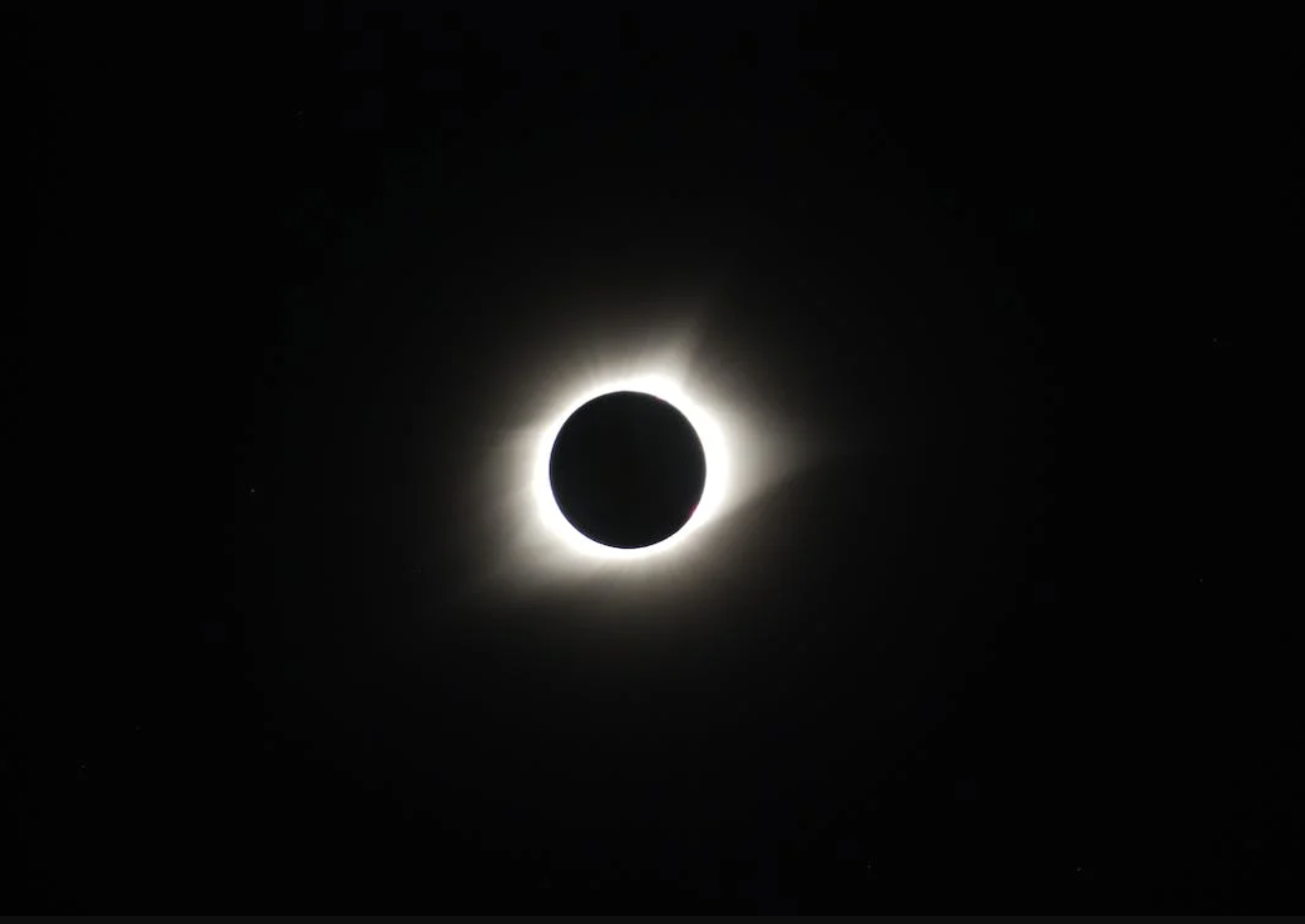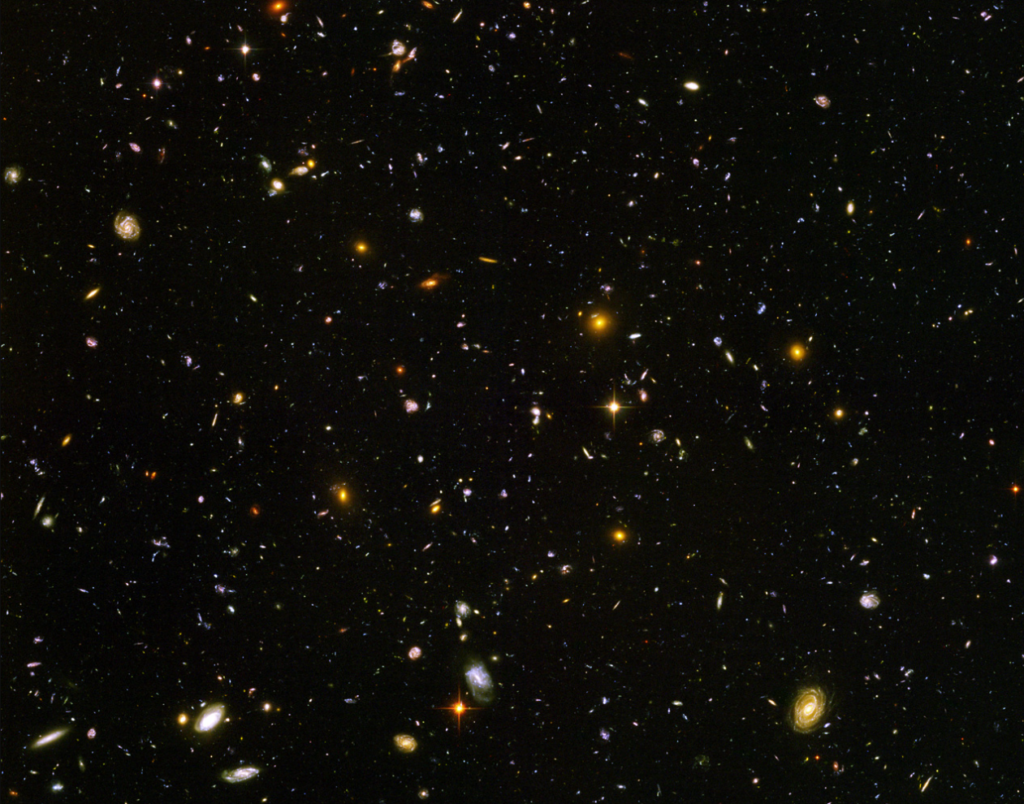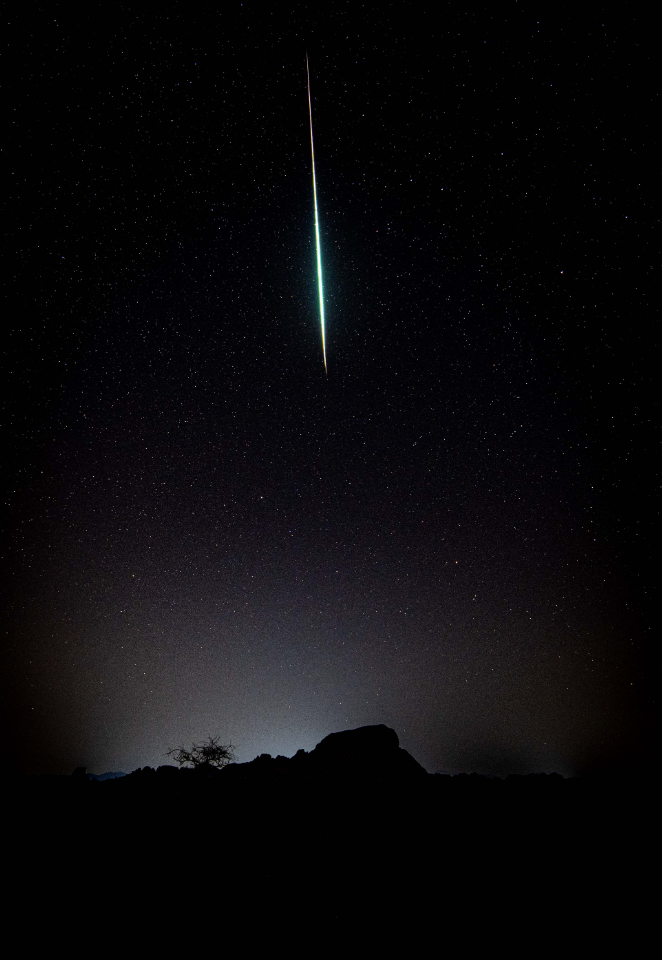
How Big Is Big? Pretty Big.
When you look up into the sky the light you see from the closest star to you, the Sun, is approximately 8 minutes and 30 seconds old by the time you see it. This is so because the Sun is an average of 93,000,000 miles away from you. The speed of light is approximately 186,000 miles per second which multiplies out to 11,160,000 miles per minute. So it takes on average 8.33 minutes for it to get from the Sun to you.
For purposes of comparison and scale keep in mind the following (these are all approximate as the speed of light is a more precise figure than below):
In 1 second light travels 186,000 miles.
In 1 minute light travels 11,160,000 miles (60 seconds x 186,000 mps = 11,160,000 mpm).
In 1 hour light travels 669,600,000 miles (60 seconds x 60 minutes x 186,000 mps = 669,600,000 mph).
In 1 day light travels 16,070,400,000 miles (60 seconds x 60 minutes x 24 hours x 186,000 mps = 16,070,400,000 mpd).
In 1 year light travels 5,865,696,000,000 miles (60 seconds x 60 minutes x 24 hours x 365 days x 186,000 mps = 5,865,696,000,000 mpy). The distance light travels in 1 year is also known as a “lightyear”.
Those interested in the study of the universe can quantify the distances involved by lightyears.
Another way of quantifying distance in space involves a measure of distance known as a “parsec”. 1 parsec = 3.26 lightyears = 19 trillion miles. “The term parsec is a portmanteau – a combination of two words: Parallax and Arcsecond. The unit was likely named by a British astronomer, Herbert Hall Turner, who suggested the unit of astronomical measurement in 1913.” Source: https://www.wyzant.com/blog/how_to_calculate_a_parsec/
Star Wars fans might remember Hans Solo mentioning parsecs.
“Han Solo tells Luke Skywalker and Obi-Wan Kenobi that the Millennium Falcon ‘made the Kessel Run in less than 12 parsecs’. Unfortunately, like the similarly misused ‘light-year’, the parsec is a unit of length, not of time. A parsec is equal to about 3.26 light-years or roughly 31 trillion kilometres (19 trillion miles). The unit has its origins in one of the first methods of determining the distance to the stars. Using the principle of parallax, some stellar distances can be found by measuring their tiny shift in position as the Earth undergoes its yearly orbit around the Sun. This only works for relatively nearby stars. One parsec is defined as the distance at which one astronomical unit (the average distance between the Earth and Sun) subtends an angle of one arc-second. The nearest star, Proxima Centauri, is about 1.3 parsecs away, while the Milky Way is more than 31,000 parsecs across.” Source: https://www.sciencefocus.com/space/what-is-a-parsec/

“Galaxies, galaxies everywhere – as far as the NASA/ESA Hubble Space Telescope can see. This view of nearly 10,000 galaxies is the deepest visible-light image of the cosmos. Called the Hubble Ultra Deep Field, this galaxy-studded view represents a “deep” core sample of the universe, cutting across billions of light-years. The snapshot includes galaxies of various ages, sizes, shapes, and colours. The smallest, reddest galaxies, about 100, may be among the most distant known, existing when the universe was just 800 million years old. The nearest galaxies – the larger, brighter, well-defined spirals and ellipticals – thrived about 1 billion years ago, when the cosmos was 13 billion years old.” Source/Image Source: https://esahubble.org/images/heic0406a/
So, all that being said about distance and measurements, how big is big? Check out the video below for perspective on your/our place in the overall scheme of things:


